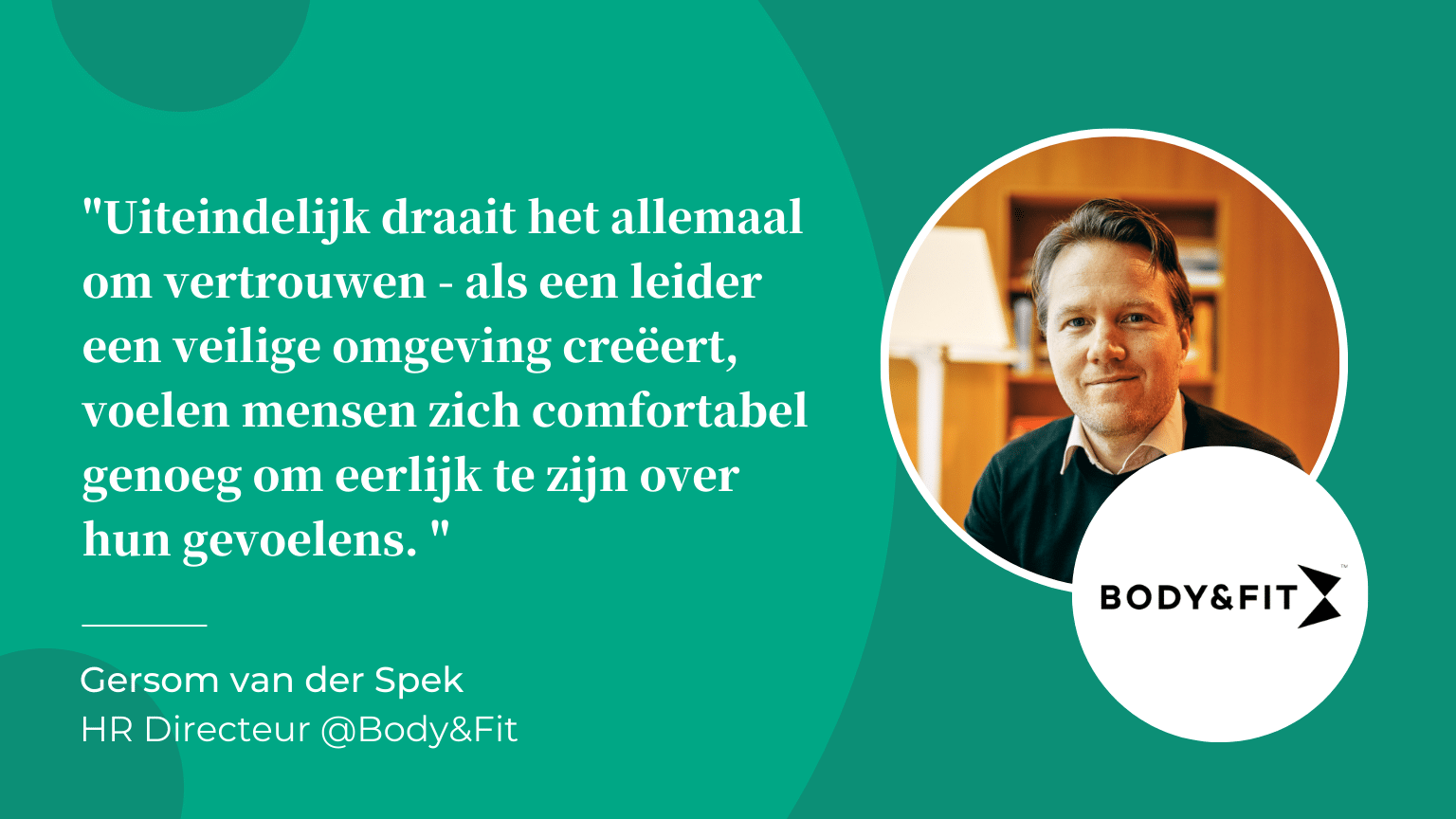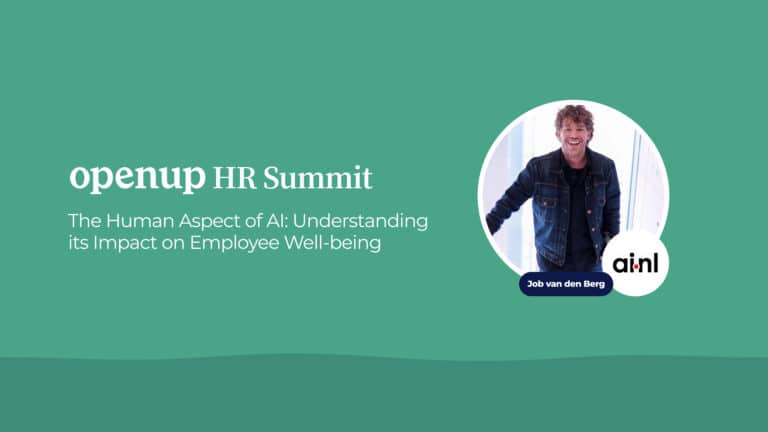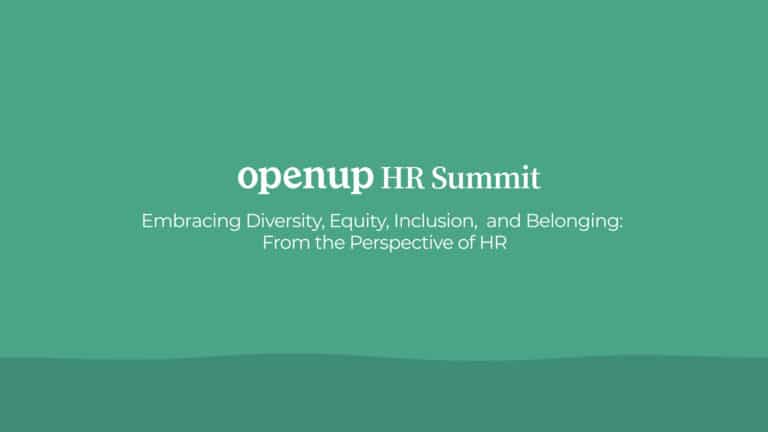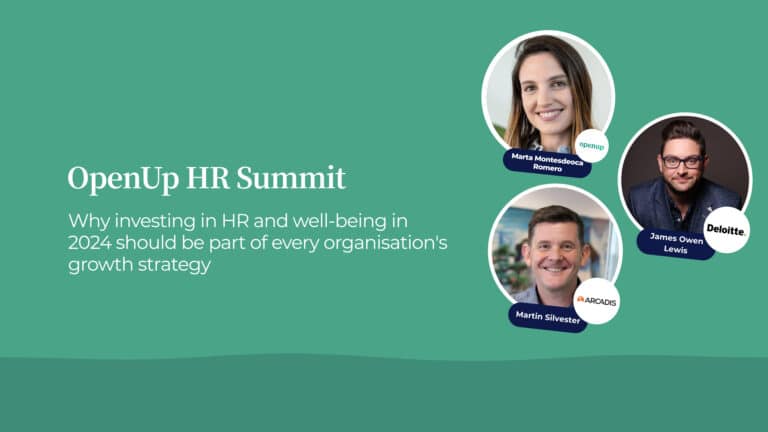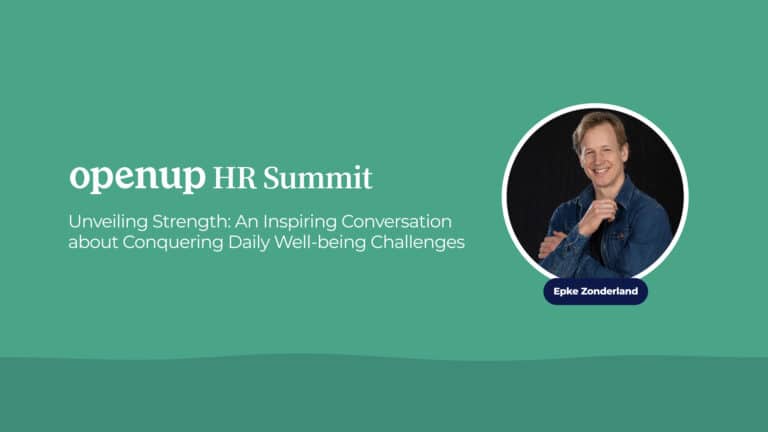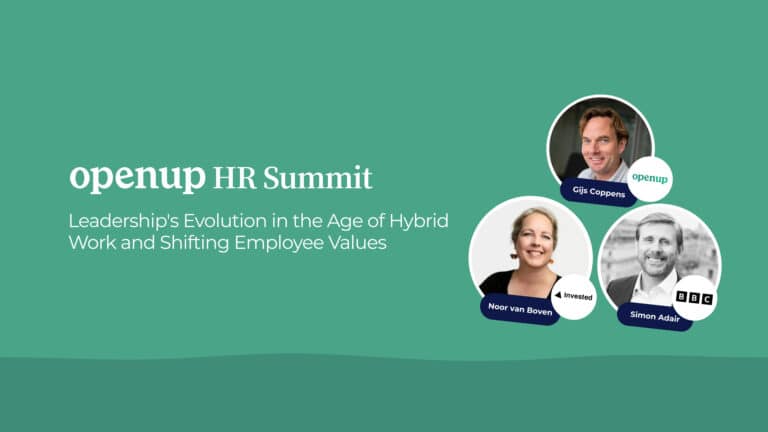De zorg voor ons mentaal welzijn moet worden beschouwd als een natuurlijke gewoonte in onze dagelijkse routine. Net als dat lichaamsbeweging goed is voor ons lichaam, beschouwen we het verzorgen van onze hersenen en geest als een preventieve vorm van zorg. Dit geldt voor elk gebied van ons leven, of het nu professioneel, persoonlijk of sociaal is.
Gelukkig zijn wij niet de enigen die volgens deze filosofie werken. Andere bedrijven normaliseren en geven prioriteit aan het gesprek over mentaal welzijn. Gersom Van der Spek, Human Resources Directeur bij Body&Fit deelde met ons zijn visie op mentaal welzijn.
Gersom, bedankt dat je dit interview met ons doet. We willen beginnen met een hele eenvoudige vraag: hoe voel je je nu?
Ik voel me goed, zowel fysiek als mentaal. Het is ook het juiste moment om dit te vragen, want ik ben net terug van een gecombineerde zaken- en privéreis naar de westkant van de VS, die geweldig was.
Hoe moedig je andere mensen aan om openlijk te zeggen hoe ze zich voelen?
Gewoon door het te vragen en met de echte bedoeling om te luisteren en een eerlijk antwoord te krijgen. Het is soms te gemakkelijk om uit beleefdheid te vragen “hoe gaat het” in plaats van het echt te willen begrijpen. En in mijn functie is het ook belangrijk dat mensen merken dat ik om ze geef.
Wat betekent mentaal welzijn persoonlijk voor jou? En hoe zorgt u voor uw eigen mentaal welzijn?
Met een druk werk- en gezinsleven gaat het erom regelmatig momenten van ontspanning te creëren voor je eigen geestelijk welzijn. Voor mij kan dat een wandeling door het mooie Amsterdam zijn, een kop koffie, muziek luisteren in de auto, een reis naar het buitenland, gewoon kleine betekenisvolle dingen. Dat kan alleen zijn of met dierbaren.
Kun je ons iets meer vertellen over Body&Fit en uw visie op mentaal welzijn binnen het bedrijf? Wat is de visie en aanpak van mentaal welzijn bij Body&Fit?
Het doel van ons bedrijf is om mensen over de hele wereld te inspireren om fitter en gezonder te leven. Dit doen we door sportvoeding aan te bieden aan onze consumenten, maar het is natuurlijk breder dan dit. Je fitheid vinden heeft alles te maken met je fysieke, emotionele, financiële en mentale toestand. Het begint met het intern leven en ademen van ons doel. Toen ik erbij kwam, hadden we te veel ziekteverzuim. Nu richten we ons veel op preventieve maatregelen. We waren een van de eersten die met jullie samenwerkten, we hebben enquêtes over geestelijke gezondheid gehouden, bewustmakingsworkshops voor onze leiders georganiseerd, Erik Scherder kwam als gastspreker praten over de invloed van de hersenen op onze gezondheid en we hebben inloopsessies met onze bedrijfsarts opgezet.
We hebben ook een zeer flexibele gemengde werkaanpak die werkt voor ons kantoorpersoneel. Een mix van wekelijks op kantoor en thuis zijn met flexibele begin- en eindtijden, en aangezien we veel internationale mensen hebben, hebben we ook de mogelijkheid ingevoerd om 30 dagen in het buitenland te werken, zodat mensen meer tijd in hun eigen land kunnen doorbrengen. En als mensen toch voor uitdagingen komen te staan, dan zorgen we voor een grondig reïntegratieproces of een aangepast werkschema om het risico op uitval te minimaliseren.
Voor welke uitdagingen sta jij als leider bij het realiseren van deze aanpak?
De grootste uitdaging blijft altijd het herkennen van vroege tekenen van vermoeidheid of mentale stress, en dat is soms gemakkelijker te doen bij de ene persoon dan bij de andere. Wij blijven onze leiders bewust maken van wat deze tekenen kunnen zijn, maar het is gemakkelijker gezegd dan gedaan. Dus hebben we nog steeds incidenteel gevallen waarin mensen uitvallen ondanks onze preventieve maatregelen.
Wat maakt OpenUp een waardevolle aanwinst voor uw welzijnsstrategie?
Een zeer preventieve, laagdrempelige manier voor mensen om zich letterlijk open te stellen en met een externe, vertrouwelijke persoon te praten als ze daar op een bepaald moment behoefte aan hebben. Ik ben blij dat we dit aan onze mensen kunnen aanbieden. Bovendien willen we de e-learnings van OpenUp meer promoten, want de inhoud is rijk. We hebben veel GenZ-medewerkers die meer willen weten over geestelijke gezondheid in het algemeen.
Welke rol spelen u en uw leiderschapsteam in het geestelijk welzijn van uw werknemers? Welke vaardigheden hebben jouw leiders nodig om het algemene welzijn van het personeel te verbeteren?
Het klinkt cliché, maar wij als leiders staan altijd op het podium, dus als we niet doen wat we preken, is onze hele aanpak niet geloofwaardig. Daarom blijf ik het belang van welzijn in onze regelmatige vergaderingen aankaarten en moedig ik hen aan deel te nemen en maatregelen te nemen in hun eigen team.
Wat vaardigheden betreft: ook hier gaat het vooral om bewustmaking, inspireren met succesvolle voorbeelden die we hebben en de juiste vragen stellen aan hun teamleden om zich open te stellen. Uiteindelijk draait het allemaal om vertrouwen – als een leider een veilige omgeving creëert, voelen mensen zich comfortabel genoeg om eerlijk te zijn over hun gevoelens. Dan kun je de juiste, op maat gesneden steun geven.
Wat zijn enkele eenvoudige manieren waarop leiders nu actie kunnen ondernemen?
1:1 wandelsessies buiten, mensen tijd geven na een drukke periode, regelmatige check-ins met hun teams om in contact te blijven, en het belangrijkste; zorg eerst voor jezelf! Als een leider zelf niet mentaal en fysiek fit is, dan kun je niet effectief leiding geven aan een team en aan de welzijnsagenda.
Bij Body&Fit hebben werknemers de flexibiliteit om thuis, in het buitenland of op kantoor te werken. Welke tips kun je delen met leiders over het bevorderen van samenwerking in een hybride team?
Ik moet zeggen dat mensen een beetje moe werden van virtuele verbindingen na twee jaar opsluiting, dus we richten ons eigenlijk op zoveel mogelijk face-to-face interactie op kantoor wanneer mensen samen zijn, inclusief bedrijfsinitiatieven zoals vergaderingen voor alle werknemers, sociale evenementen enz. Als je thuis werkt, kun je beter tijd besteden aan de typische dingen zoals werken aan je project, een presentatie maken enz.
Heeft u advies voor de lezers over hoe de juiste strategie voor het welzijn van werknemers kan worden ontwikkeld, waarbij het leiderschapsteam wordt betrokken?
Zoals bij elk belangrijk People-onderwerp begint verandering altijd met het creëren van een gevoel van urgentie. Er zijn zoveel gegevens beschikbaar over het belang van welzijn in onderzoek maar ook in interne enquêtes. Meer dan ooit, na de lockdown en met een kwetsbare GenZ, loont aandacht voor welzijn. En handel er ook naar – laat zien dat je het als bedrijf serieus neemt.
Na de afgelopen twee jaar kan ik zeggen dat we genoeg ‘bewijs’ hebben dat het ons wat kan schelen en dat we niet stil gaan zitten. Ook voor dit en de komende jaren zullen we onze medewerkers blijven betrekken en nieuwe manieren vinden om impact te maken, aangezien de wereld voortdurend snel verandert. Gelukkig staat ons moederbedrijf Glanbia Performance Nutrition ook volledig achter de welzijnsagenda, zodat we ook op hun beste praktijken kunnen voortbouwen.
